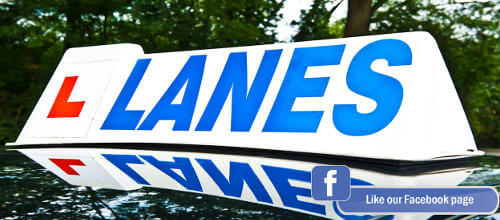Driving on multi-lane carriageways can be an exhilarating experience, offering both the thrill of speed and the challenge of managing multiple lanes. Whether you are a seasoned driver or a novice, understanding the intricacies of these expansive road networks is essential for a safe and stress-free journey.
In this blog post, we will explore multi-lane carriageways, covering basic definitions, key rules from the highway code, and advanced driving techniques.
Understanding Multi-Lane Carriageways
A multi-lane carriageway refers to a road with multiple lanes travelling in the same direction. These roads are designed to handle a higher volume of traffic, providing drivers with additional lanes to facilitate smoother and more efficient travel.
One common type of multi-lane carriageway is the dual carriageway.
What is a Dual Carriageway?
A dual carriageway is a specific type of multi-lane road that consists of two separate carriageways, each with multiple lanes, usually separated by a central reservation or barrier.
These roadways are prevalent in the United Kingdom and other countries with robust road infrastructure. Understanding the characteristics of dual carriageways is crucial for navigating them safely.
Rules from the Highway Code
The Highway Code serves as a comprehensive guide for road users, outlining rules and regulations to ensure safe and efficient traffic flow. When it comes to multi-lane carriageways, several key rules from the Highway Code must be followed.
Merge in Turn
One fundamental rule when approaching a merge on a multi-lane carriageway is the ‘merge in turn’ principle. This means that drivers should take turns merging into the continuing lane, promoting a smooth flow of traffic.
Avoiding last-minute lane changes and respecting the order of merging helps prevent congestion and reduces the likelihood of accidents.
Bus Lanes on Multi-Lane Carriageways
Bus lanes are another aspect of multi-lane carriageways covered by the Highway Code.
These designated lanes are reserved for buses and, in some cases, cyclists during specific times. It is crucial to be aware of bus lane signage and adhere to the designated hours of operation to avoid penalties. Keeping an eye on road markings and signs helps ensure compliance with these rules.
Navigating Two-Way Roads with Three-lanes
Two-way roads with three lanes can present a unique set of challenges for drivers. In such cases, there is typically one lane for each direction of travel and a central lane for overtaking.
It is essential to use this central lane responsibly, only overtaking when it is safe to do so and returning to the appropriate lane afterwards. Understanding the purpose of each lane helps maintain a steady and safe flow of traffic.
Dual Carriageway in the UK
In the UK, dual carriageways are a common sight, providing a vital link in the country’s road network.
These roads are designed to handle higher speeds and increased traffic volumes, making them a crucial component of the transportation infrastructure. When driving on a dual carriageway in the UK, it is important to be aware of specific regulations and guidelines.
Three-Lane Dual Carriageway
Three-lane dual carriageways offer an additional layer of complexity, requiring drivers to navigate effectively and make strategic decisions. The three lanes typically consist of a slow lane, a middle lane for general traffic, and a fast lane for overtaking. Understanding when to use each lane and being mindful of other road users fosters a safer and more efficient driving experience.
Advanced Driving Techniques
Mastering multi-lane carriageways goes beyond following basic rules; it involves adopting advanced driving techniques to enhance safety and efficiency.
-
Anticipate Traffic Flow
Anticipating the flow of traffic is essential on multi-lane carriageways.
Pay attention to the behaviour of other drivers, observe road signs, and be prepared to adjust your speed and lane position accordingly. This proactive approach minimises the risk of sudden lane changes and promotes a smoother driving experience.
-
Maintain a Safe Following Distance
Maintaining a safe following distance is crucial on multi-lane carriageways, allowing you to react effectively to changing traffic conditions. The two-second rule is a helpful guideline, ensuring that there is enough space between your vehicle and the one in front to avoid collisions in case of sudden stops or emergencies.
-
Stay Aware of Blind Spots
With multiple lanes and varying speeds, blind spots become more challenging to manage on multi-lane carriageways.
Regularly check your mirrors and perform shoulder checks to stay aware of vehicles in your blind spots. This habit enhances road safety and reduces the risk of accidents during lane changes.
-
Use Headlights Effectively
In low-light conditions or adverse weather, use your headlights to enhance visibility. Ensure that your vehicle’s lights are in good working condition to communicate your presence to other motorists.
-
Emergency Situations
In the event of an emergency or breakdown, move your vehicle to the shoulder if possible. Use hazard lights to alert other drivers, and if necessary, contact emergency services for assistance. Stay inside your vehicle and wait for help in a safe location.
Automatic driving lessons can make navigating multi-lane carriageways even smoother. Eliminate the need for clutch and gear changes, allowing you to focus on the road and traffic flow.
Consider single and block-booked driving lessons to suit your learning pace and schedule.
Conclusion
Navigating multi-lane carriageways requires a combination of knowledge, adherence to rules, and advanced driving techniques. Whether you are driving on a dual carriageway in the UK or tackling a three-lane dual carriageway, understanding the nuances of each situation is key to a safe and enjoyable journey.
If you are looking to improve your driving skills and learn how to navigate multi-lane carriageways safely and confidently, Lanes School of Driving can help. We offer a variety of courses to suit all levels of experience, from beginner to advanced. Our instructors are all qualified and experienced, and they will provide you with the skills and knowledge you need to drive safely on the road. We also offer a driving instructor course for those interested in becoming a certified driving instructor.
Contact us today and book your first lesson!

